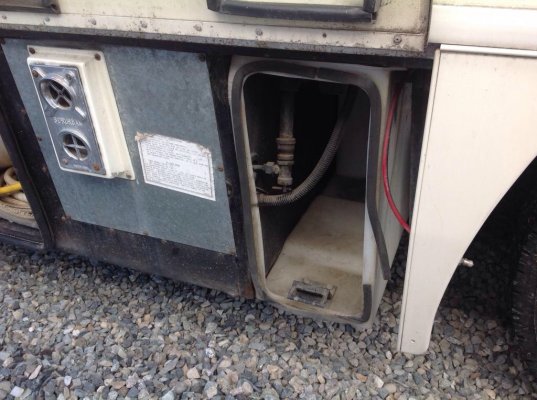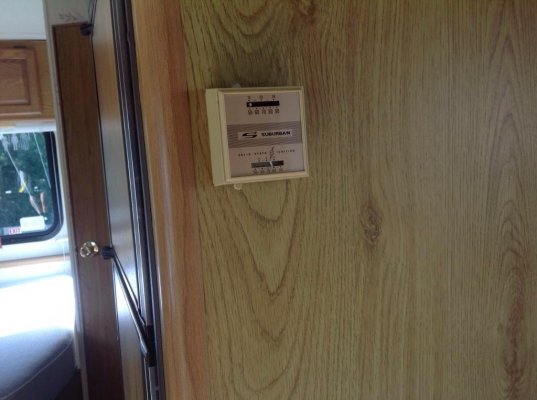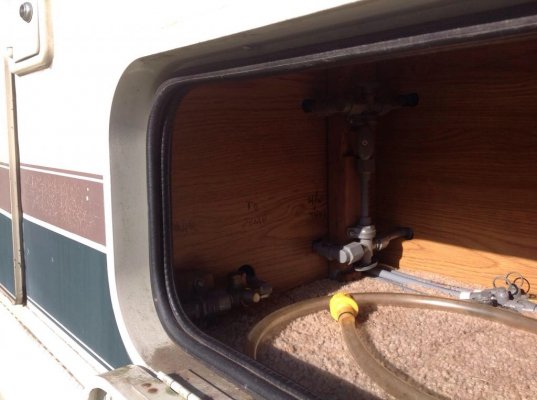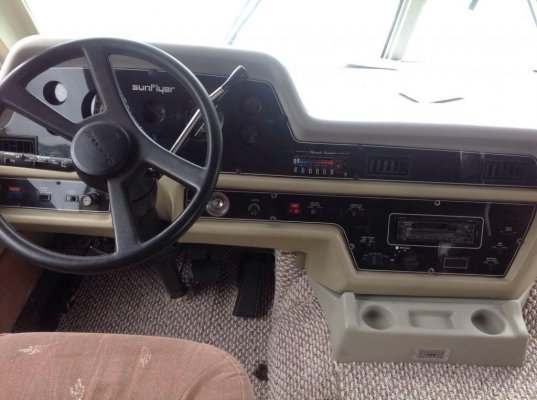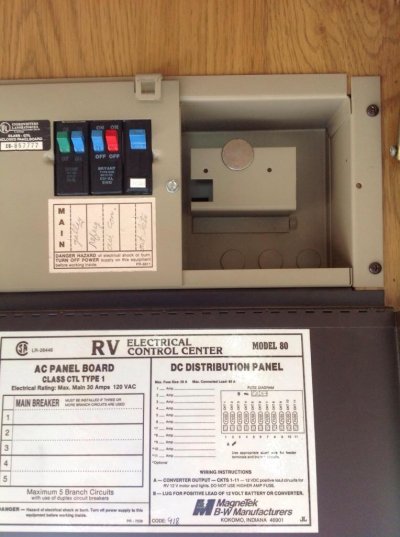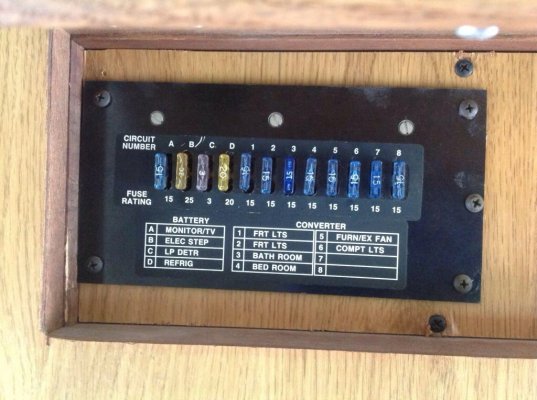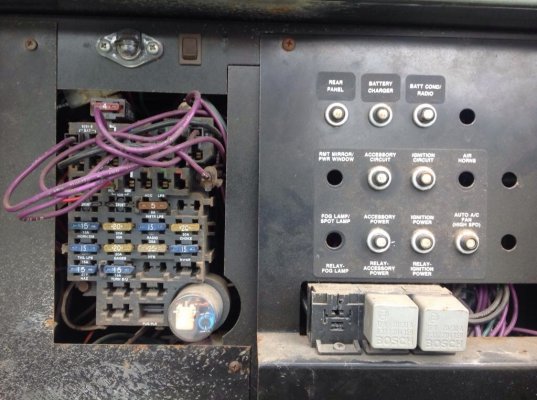Picture A is the combustion air intake and exhaust for your Suburban furnace. Make sure insects haven't built nests inside them, they're attracted by the propane odor.
The furnace is controlled using the thermostat in Picture B, just like a home furnace. Turn the bottom switch on, then set the desired temperature on top. The bottom gauge is a room thermometer.
The furnace needs propane to burn (in the propane tank) with the tank valve turned on so the fuel can flow. It also needs 12 volt power from a charged house battery or the rig plugged into shore power to run the controls and blower motor.
Picture C is the winterizing bypass around the water heater. If you store the rig in freezing temperatures, you have to drain the fresh water out of the plumbing lines and replace it with potable antifreeze so the plumbing doesn't freeze. After you drain the water out of the water heater, you can turn those valves to isolate the heater tank from the rest of the plumbing system and provide a bypass around it (the vertical pipe in the middle). This way you use less antifreeze because you only have to fill the pipes and not the hot water tank.
The water heater is on the other side of that wood partition. It has an outside door and grate, it must be around the corner from the outside wall shown in the picture. Again, make sure an insect hasn't made a nest in the air tube running from the gas valve to the burner or around the burner itself.
To use water from the internal tank, first make sure there's some water in it. Then find the Water Pump switch and turn it on. The pump will run for a moment to pressurize the water lines, then it'll turn itself on and off automatically when you open or close a faucet.
Most water heaters have automatic ignition, look for a toggle switch inside with a red light inside the toggle. Turn the switch on and the red light will come on, then a few seconds later the water heater will light and the red light will turn off. If it comes back on again, it means the flame has failed.
Or you may have a manual pilot flame. In this case, the control valve is behind the outside door and will have an on-off knob and a button to press so you can light the pilot.

